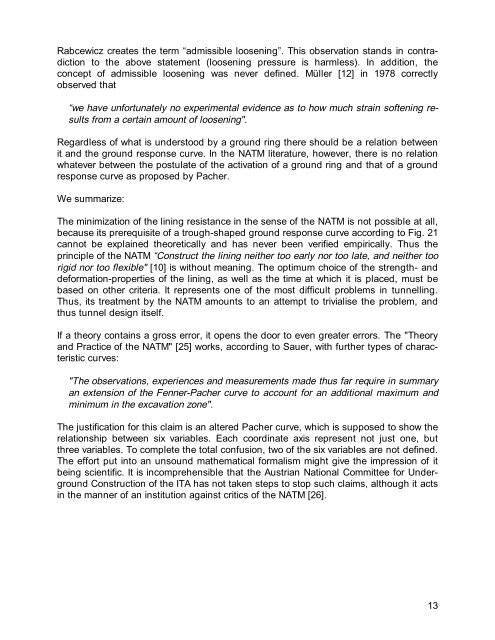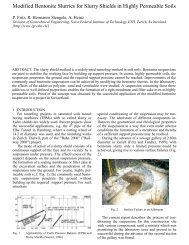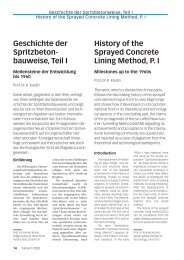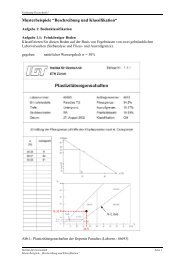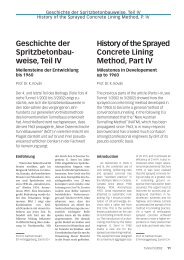Erroneous Concepts behind NATM
Erroneous Concepts behind NATM
Erroneous Concepts behind NATM
You also want an ePaper? Increase the reach of your titles
YUMPU automatically turns print PDFs into web optimized ePapers that Google loves.
Rabcewicz creates the term “admissible loosening”. This observation stands in contradiction<br />
to the above statement (loosening pressure is harmless). In addition, the<br />
concept of admissible loosening was never defined. Müller [12] in 1978 correctly<br />
observed that<br />
“we have unfortunately no experimental evidence as to how much strain softening results<br />
from a certain amount of loosening".<br />
Regardless of what is understood by a ground ring there should be a relation between<br />
it and the ground response curve. In the <strong>NATM</strong> literature, however, there is no relation<br />
whatever between the postulate of the activation of a ground ring and that of a ground<br />
response curve as proposed by Pacher.<br />
We summarize:<br />
The minimization of the lining resistance in the sense of the <strong>NATM</strong> is not possible at all,<br />
because its prerequisite of a trough-shaped ground response curve according to Fig. 21<br />
cannot be explained theoretically and has never been verified empirically. Thus the<br />
principle of the <strong>NATM</strong> “Construct the lining neither too early nor too late, and neither too<br />
rigid nor too flexible" [10] is without meaning. The optimum choice of the strength- and<br />
deformation-properties of the lining, as well as the time at which it is placed, must be<br />
based on other criteria. It represents one of the most difficult problems in tunnelling.<br />
Thus, its treatment by the <strong>NATM</strong> amounts to an attempt to trivialise the problem, and<br />
thus tunnel design itself.<br />
If a theory contains a gross error, it opens the door to even greater errors. The "Theory<br />
and Practice of the <strong>NATM</strong>" [25] works, according to Sauer, with further types of characteristic<br />
curves:<br />
"The observations, experiences and measurements made thus far require in summary<br />
an extension of the Fenner-Pacher curve to account for an additional maximum and<br />
minimum in the excavation zone".<br />
The justification for this claim is an altered Pacher curve, which is supposed to show the<br />
relationship between six variables. Each coordinate axis represent not just one, but<br />
three variables. To complete the total confusion, two of the six variables are not defined.<br />
The effort put into an unsound mathematical formalism might give the impression of it<br />
being scientific. It is incomprehensible that the Austrian National Committee for Underground<br />
Construction of the ITA has not taken steps to stop such claims, although it acts<br />
in the manner of an institution against critics of the <strong>NATM</strong> [26].<br />
13


